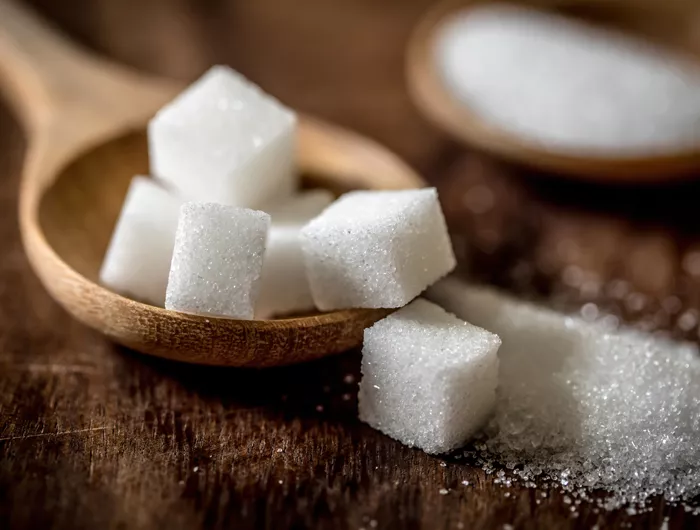Added sugar warnings on unhealthy beverages may reduce parents’ purchases

Harvard and CSPI researchers test parents’ reactions to front-of-label claims on drinks
Added sugar warnings—especially those that disclose added sugar content in teaspoons—may reduce parents’ purchases of high-added-sugar beverages for their young children, according to new research published today in JAMA Network Open.
Researchers from the Harvard T.H. Chan School of Public Health, the Center for Science in the Public Interest, the Perelman School of Medicine at the University of Pennsylvania, and the Johns Hopkins Bloomberg School of Public Health assessed the effects of five front-of-package attributes (see below) on high-added-sugar fruit drinks commonly purchased by households with children, looking particularly at 100% vitamin C claims, images of fruit, percent-juice disclosures, teaspoons-of-added sugar disclosures, and “high added sugars” warnings.
The researchers used a randomized controlled trial to assess 5,005 parents’ beverage choices for their children. Parents could choose between a high-added-sugar fruit drink, low-added-sugar fruit drink, no-added-sugar fruit drink, 100% juice, soda, milk, or water. Compared to a control group in which parents saw “status quo” high-added-sugar beverages with 100% vitamin C claims and fruit imagery, 15 percent fewer parents chose a high-added-sugar beverage when packages additionally displayed warnings with teaspoons-of-added-sugar disclosures, reducing added sugar and calories in chosen beverages by 14 percent and 7 percent, respectively.
The experiment also found that 18 percent fewer parents chose a high-added-sugar beverage when shown the same packages without 100% vitamin C claims and fruit imagery.
These results were primarily driven by parents shifting from choosing high-added-sugar fruit drinks to watered down fruit juice with no added sweeteners, even though their choices also included alternative naturally and artificially sweetened fruit drinks, soda, 100% juice, milk, or water.
Percent juice declarations on labels increased participants’ knowledge but didn’t affect their beverage choices, according to the researchers.
Fruit drinks are the most commonly consumed sugar-sweetened beverage among kids aged one to eight. And consuming sugar-sweetened beverages increases the risk of type 2 diabetes, in part by increasing the risk of weight gain, and can contribute to tooth decay.
“Thanks to the creative efforts of food marketers, many parents are under the impression that so-called fruit drinks are healthy choices for children,” said CSPI senior science policy associate Eva Greenthal. “But when we tell parents exactly how much added sugar is in the product, especially expressed in terms like teaspoons that people can understand, they often make healthier choices.”
“The front label of foods and drinks is prime real estate, and the industry takes maximum advantage of it to drive sales,” said Aviva Musicus, postdoctoral research fellow at the Harvard T.H. Chan School of Public Health and leader of the research project. “This research shows what might be achieved if that real estate were better regulated by the government to include messages informing consumers about what they are actually purchasing.”
The new research comes on the heels of the White House Conference on Hunger, Nutrition, and Health, and the release of the Biden-Harris administration’s national strategy, which calls for front-of-package nutrition information and other steps to reduce added sugar consumption. In August, CSPI petitioned the Food and Drug Administration to design such a system, which, if mandatory, could alert consumers when a product is high in sodium, added sugars, or saturated fat.
Tags
Topics
Contact Info: Contact: Lisa Flores, CSPI, 202-777-8368 or Nicole Rura, HSPH, 617-221-4241

